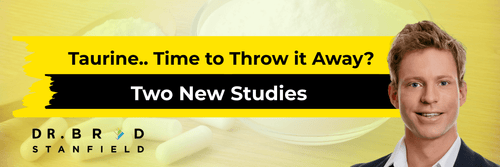Here is the full protocol to reverse the signs of skin aging based on the latest science. This is not for vanity reasons. How our skin looks reflects our chances of living a long life.
If we see a young person in the mirror, we are more likely to identify as being young and practice those healthy life habits.
I've structured these strategies to follow a typical daily routine.
Table of Contents
- Introduction
- (Strategy 1) Sunscreen After Shower
- (Strategy 2) Moisturizers with Ceramides and Vitamin B3
- (Strategy 3) Diet
- (Strategy 4) Hyaluronic Acid Supplements
- Absorption Debate and the 2023 Study
- Evidence from Randomized Controlled Trials
- (Strategy 5) Collagen Peptides Supplements
- (Strategy 6) Exercise
- (Strategy 7) Retinoids at Night
- (Strategy 8) Alpha and Beta Hydroxy Acid Exfoliants at Night
- References
Introduction
Here is the full protocol to reverse the signs of skin aging based on the latest science.
This is not for vanity reasons. How our skin looks reflects our chances of living a long life [1]. And if we see a young person in the mirror, we are more likely to identify as being young and practice those healthy life habits.

I've structured these strategies to follow a typical daily routine.
(Strategy 1) Sunscreen After Shower
After shower, the first out of 8 strategies is sunscreen. But it's critical to pick a sunscreen with certain ingredients that I'll list shortly, because there are safety concerns with some sunscreens.
To show you the power of sunscreen, here's a striking photo of a 92-year-old who used sunscreen on her face, but not her neck for over 40 years [2].
In a landmark 2013 trial of 903 adults, the group who used sunscreen every day didn't show any signs of skin aging after 4.5 years! [3]
A follow-up study in 2016 showed that using sunscreen not only stops aging but can even reverse signs of aging in the skin [4].
Sunscreen is critical, but there are legitimate safety concerns with some sunscreen ingredients.
Broadly speaking, there are two main types of sunscreens: mineral sunscreens and chemical sunscreens.

While chemical sunscreens often give better protection against UV rays, are easier to apply, and are water-resistant, many of their ingredients can be absorbed through the skin. A study in 2020 showed that all six tested active ingredients were absorbed into the blood and were above the FDA's safety levels [5].
The American Academy of Dermatology acknowledges this in their guidelines, where they state that the FDA wants more data on 12 ingredients before deciding if they are safe and effective [6].
My own personal decision is to avoid those 12 ingredients until that safety data has come through.
These concerns have steered many people away completely from chemical sunscreens, which is not what I do by the way, but more on that later, and toward mineral sunscreen ingredients which are not absorbed.
But even though some sunscreens are marketed as mineral-based sunscreens, many of the labels are sneaky. For example, EltaMD is a really popular choice as a mineral-based sunscreen. But if we look at the ingredients list, while it does contain Zinc Oxide, it also contains Octinoxate [7], which is one of the chemical sunscreen ingredients that was flagged by that 2020 study, and needs further study. Plus, octinoxate was banned in Hawaii due to its potential toxic effects on marine ecosystems [8].
The only two mineral sunscreen ingredients that the FDA says are generally safe and effective are titanium dioxide and zinc oxide. Zinc oxide protects against both UVB and UVA, while titanium dioxide mostly protects against UVB.
So if we're going to select a mineral sunscreen, it's vital to have Zinc Oxide in it to offer that broad-spectrum protection against both UVA and UVB.
No matter what sunscreen we use, the American Academy of Dermatology says we should reapply it every two hours, or more if we're swimming or sweating.
ConsumerLab.com has a great list of mineral-based sunscreens that are broad spectrum and may be less problematic. But even so, we need to look at the labels ourselves.
One option that does meet my requirements is CeraVe 100% Mineral Sunscreen SPF 50. It has both titanium dioxide and zinc oxide, and none of the 12 flagged ingredients from the FDA [9] [10].
Now there are certainly other options, but I mention this one because it's relatively cheap and it meets the requirements that I was looking for, and I'm not affiliated in any way. But it can leave a white film on the skin which isn't ideal, and it's not the sunscreen I use on my face.
While I made the decision to avoid the 12 FDA-flagged ingredients, there are newer chemical sunscreen ingredients that offer the best of both worlds. One of those ingredients is called bemotrizinol (bis-ethylhexyloxyphenol methoxyphenyl triazine) [11]. It gives great UVA and UVB protection, but it's a large molecule and doesn't get absorbed through the skin. It's been used in sunscreens for decades in Europe and Australasia and is awaiting FDA approval in the USA [12].
Since I'm lucky enough to live in New Zealand, I have access to sunscreens that don't have those 12 FDA-flagged ingredients, and instead use newer chemical ingredients like bemotrizinol.
There are 4 famous Korean brands that are great options [13,14,15,16]. The one I'm using at the moment is Beauty of Joseon, but any of those 4 options would be a great choice.
If I didn't have access to those sunscreens, I'd use CeraVe 100% Mineral Sunscreen SPF 50 [10]. Again, it leaves a white film when applying it, but personally I'd prefer that than use a daily sunscreen with ingredients that need further study.
For my arms, the Beauty of Joseon is too expensive. So I use the CeraVe mineral sunscreen on my arms and back of my neck [10].
When I go swimming though, mineral sunscreens tend to wash off too quickly. So instead of using the CeraVe mineral sunscreen, I use La Roche Posay Anthelios XL Wet Skin SPF50+, which is a chemical sunscreen [17]. It does have a couple of FDA-flagged ingredients, but on a balance of benefit vs risk, I want to make sure that I have protection from UV radiation.
(Strategy 2) Moisturizers with Ceramides and Vitamin B3
The second of eight strategies to reverse the signs of skin aging is to use a moisturizer with a couple of critical ingredients.
Ceramides are like the glue that holds our skin cells together, keeping our skin barrier strong and healthy. In 2019, a study showed that ceramides can reduce wrinkles and improve skin texture [18].

Another helpful ingredient is Vitamin B3, also known as niacinamide. Niacinamide can improve fine lines, wrinkles, spots, redness, and elasticity. It also helps our skin make ceramides [19].
I use CeraVe PM Facial Moisturizing Lotion [20] and I apply it a few minutes after putting on my sunscreen.
(Strategy 3) Diet
I then have breakfast and that brings me onto the 3rd of 8 strategies: diet.
No one diet is going to be perfect for everyone, however as per the clinical guidelines, a diet featuring plentiful fresh fruit and vegetables, herbs, nuts, beans, and whole grains; moderate amounts of seafood, dairy, chicken, and eggs; and occasional red meat is associated with good skin health [21].

The diet fundamentals that I emphasize to my patients at the clinic are a diet high in lean protein and fiber, with unsaturated fats like extra-virgin olive oil and avocados, while minimizing sugar, processed foods, and salt.
(Strategy 4) Hyaluronic Acid Supplements
During my breakfast, I take a supplement which has strong evidence from human clinical trials that it reverses skin wrinkles by up to 18%. That supplement is Hyaluronic Acid (HA), and it's found in every connective tissue and organ [22]. The skin contains the largest quantity of HA in the body, with about 50% of total HA present in the skin. Unfortunately, the quantity of HA in the skin gradually decreases with age.

Rebuilding HA is like adding new springs, restoring some of that original support [23].
Absorption Debate and the 2023 Study
There are two controversies around HA supplements:
1. Can the body actually absorb hyaluronic acid supplements?
In the 2000s and early 2010s, animal experiments demonstrated that HA supplements can be absorbed and distributed to the skin, bones, and joint fluid [25]. However, a 2023 study has completely upended that conclusion [26].
This 2023 study found that our gut bacteria completely break down hyaluronic acid into short oligosaccharides and short chain fatty acid metabolites, which are then absorbed. It's those broken down pieces which have an effect on our skin, rather than any direct effects of intact HA being absorbed [26].

Because the HA is broken down, buying expensive high-molecular weight HA supplements is probably a waste of money. The absorption is very poor (~0.2%) [26].
Evidence from Randomized Controlled Trials
Despite absorption questions, multiple human randomized placebo-controlled trials (from 2001 to 2023) show that HA supplements improve skin hydration and decrease wrinkles [22,27,28,29,30].

For example, a 2021 randomized controlled trial showed significant improvements in wrinkles and skin hydration with 120 mg daily of HA after 12 weeks [27]. Another 2021 trial showed an 18.8% reduction in wrinkle depth after only 28 days [28]. A larger 2023 trial with 129 people again demonstrated skin improvements from HA supplements [30].
Safety Considerations
Some people may experience tummy upset. The big safety concern on social media is cancer. In single cell studies, HA can fuel cancer cell growth, but in animal studies, giving HA supplements to tumor-bearing mice did not affect tumor growth [31,32]. So current data support that orally administered HA is safe.
When designing MicroVitamin, I elected to use Sodium Hyaluronate 200mg due to its enhanced stability, solubility, and smaller molecular size [23]. I take MicroVitamin with my breakfast. But just because I take it doesn't mean you should.
(Strategy 5) Collagen Peptides Supplements
The 5th of 8 strategies is also a supplement I take with my breakfast: collagen peptides.
We have evidence from multiple clinical trials that collagen peptide supplements reduce skin wrinkles by about 8% [33].
Collagen peptides are chopped-up collagen proteins to help absorption. Critics say that if you consume enough protein, there's no added benefit. However, we have specific peptide transporters that help collagen peptides be directly absorbed and transported to the skin [34].

But what evidence do we have that collagen peptides do offer benefits over and above supplementing with protein?
In a 2020 randomized controlled trial of burn patients, one group took protein and the other took collagen peptides. The collagen peptide group experienced a significantly higher wound healing rate compared to the protein group, suggesting that collagen peptides do indeed have benefits beyond just supplying amino acids [35,36].
A 2023 meta-analysis confirmed that collagen supplements improve skin hydration and elasticity [37].
I take 10-15 grams of collagen peptides daily.
(Strategy 6) Exercise
The next strategy is exercise. A really interesting paper published in 2023 looked at resistance training's effects on skin aging. It found that aerobic training improved skin elasticity and upper dermal structure but not dermal thickness, whereas resistance training did improve dermal thickness [38].

The overall point is that exercise has powerful effects on our skin, just like diet and sleep. We want to prioritize both resistance and aerobic exercise.
(Strategy 7) Retinoids at Night
Coming to the end of the day, the 7th strategy is using a night cream that contains retinoids.
Retinoids strengthen the skin's protective barrier, reduce water loss, and stop enzymes that break down the skin's support structure [39].
Tretinoin is the oldest and most studied retinoid. In the early 90s, it was approved to treat fine wrinkles and uneven coloration from sun damage. A large review looking at 180 studies found that tretinoin improves signs of photoaging as early as one month after starting [40]. Another case study showed striking improvements in just 3 months [41].
Adapalene is a third-generation retinoid that's highly targeted, causing less irritation. A 2018 trial showed that adapalene at 0.3% was just as good as tretinoin at 0.05% for reducing signs of skin aging [42].

In most places, tretinoin requires a prescription. Adapalene 0.1% gel is often available over-the-counter, while 0.3% typically needs a prescription.
Retinol-based cosmeceuticals generally don't have as much evidence behind them compared to tretinoin or adapalene [43].
It's recommended to use retinoids at night because they can increase sensitivity to the sun and degrade in sunlight. Also, avoid retinoid use during pregnancy. Common side effects include dryness, redness, and stinging, which usually fade over time. Start slowly (every third or fourth day) and gradually increase frequency as your skin adapts.
In New Zealand, I don't have access to 0.3% adapalene, so I use tretinoin 0.05% daily.
(Strategy 8) Alpha and Beta Hydroxy Acid Exfoliants at Night
The 8th and final strategy is another night cream approach: using exfoliants like lactic acid and glycolic acid. Over time, these exfoliants affect the deeper layers of the skin, promoting collagen and elastin regeneration and reducing the appearance of fine lines [44,45].
Both alpha hydroxy acids (like lactic and glycolic acids) and beta hydroxy acids (like salicylic acid) help remove dead skin cells and promote skin renewal.
On Monday and Thursday nights, I apply both an AHA and a BHA and leave them on overnight [46].

For most people, I recommend against using retinoid creams at the same time as these exfoliants, as it can significantly inflame the skin. My skin tolerates it well, but that's not standard. Begin by only using one or the other on any given night.
I use Paula's Choice SKIN PERFECTING 8% AHA Gel Exfoliant & 2% BHA Liquid [46], and I'm not affiliated in any way.
Now it's time to go to bed and have a restful sleep. Check out my recommendations on optimizing sleep so you can fall asleep when you want to and wake up feeling rested and energized.
References
[1] https://academic.oup.com/biomedgerontology/article/68/2/145/544529
[2] https://onlinelibrary.wiley.com/doi/full/10.1111/jdv.17660
[3] https://pubmed.ncbi.nlm.nih.gov/23732711/
[4] https://pubmed.ncbi.nlm.nih.gov/27749441/
[5] https://jamanetwork.com/journals/jama/fullarticle/2759002
[6] https://www.aad.org/media/stats-sunscreen
[7] https://eltamd.com/products/uv-clear-broad-spectrum-spf-46
[8] https://www.ncbi.nlm.nih.gov/pmc/articles/PMC7648445/
[9] https://www.cerave.com/sunscreen/face/hydrating-mineral-sunscreen-face-lotion-spf-50
[10] https://amzn.to/4eWVJr6
[11] https://dermnetnz.org/topics/allergy-to-bemotrizinol
[12] https://www.usatoday.com/story/news/health/2024/05/17/fda-behind-sunscreen-skin-cancer/73672619007/
[13] https://hikoco.co.nz/collections/beauty-of-joseon/products/relief-sun-aqua-fresh-rice-b5-spf50-broad-spectrum
[14] https://hikoco.co.nz/products/birch-juice-moisturising-sunscreen-spf50-pa
[15] https://hikoco.co.nz/products/madagascar-centella-hyalu-cica-water-fit-sun-serum-spf50-pa
[16] https://hikoco.co.nz/products/black-rice-moisture-airyfit-daily-sunscreen-spf50-broad-spectrum
[17] https://www.chemistwarehouse.co.nz/buy/93032/la-roche-posay-anthelios-xl-wet-skin-spf50-250ml
[18] https://pubmed.ncbi.nlm.nih.gov/31585489/
[19] https://dermnetnz.org/topics/nicotinamide
[20] https://amzn.to/3SqMEic
[21] https://dermnetnz.org/topics/collagen
[22] https://www.ncbi.nlm.nih.gov/pmc/articles/PMC5522662/
[23] https://www.ncbi.nlm.nih.gov/pmc/articles/PMC10299688/
[24] https://pubmed.ncbi.nlm.nih.gov/36575898/
[25] https://www.ncbi.nlm.nih.gov/pmc/articles/PMC3512263/
[26] https://pubmed.ncbi.nlm.nih.gov/37182970/
[27] https://www.ncbi.nlm.nih.gov/pmc/articles/PMC8308347/
[28] https://pubmed.ncbi.nlm.nih.gov/34933842/
[29] https://www.jle.com/fr/revues/ejd/e-docs/oral_intake_of_a_new_full_spectrum_hyaluronan_improves_skin_profilometry_and_ageing_a_randomized_double_blind_placebo_controlled_clinical_trial_321540/article.phtml?tab=texte
[30] https://www.ncbi.nlm.nih.gov/pmc/articles/PMC10661223/
[31] https://www.ncbi.nlm.nih.gov/pmc/articles/PMC8730721/
[32] https://pubmed.ncbi.nlm.nih.gov/24894153/
[33] https://pubmed.ncbi.nlm.nih.gov/36516059/
[34] https://www.sciencedirect.com/science/article/abs/pii/S0308814614002763
[35] https://pubmed.ncbi.nlm.nih.gov/31859087/
[36] https://eprints.iums.ac.ir/24135/1/The-effect-of-a-hydrolyzed-collagenbased-supplement-on-wound-healing-in-patients-with-burn-A-randomized-doubleblind-pilot-clinical-trial2020Burns.pdf
[37] https://www.ncbi.nlm.nih.gov/pmc/articles/PMC10180699/
[38] https://www.ncbi.nlm.nih.gov/pmc/articles/PMC10290068/
[39] https://www.ncbi.nlm.nih.gov/pmc/articles/PMC6791161/
[40] https://pmc.ncbi.nlm.nih.gov/articles/PMC9112391/
[41] https://cdn.mdedge.com/files/s3fs-public/Document/September-2017/023010019.pdf
[42] https://pubmed.ncbi.nlm.nih.gov/30105991/
[43] https://academic.oup.com/asj/article-abstract/30/1/74/199813?redirectedFrom=fulltext
[44] https://dermnetnz.org/topics/alpha-hydroxy-acid-facial-treatments
[45] https://pubmed.ncbi.nlm.nih.gov/8784274/
[46] https://amzn.to/45YM1Q9


















